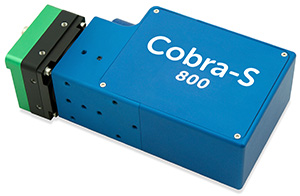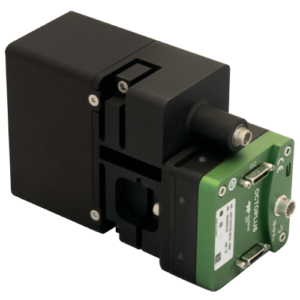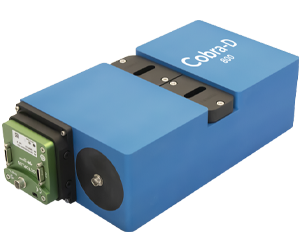Near infrared optical coherence tomography (NIR OCT) is a non-contact, noninvasive imaging technique using near infrared light. It uses the light that is scattered back from a sample to generate a cross-sectional image. If the material is semi-transparent, such as tissue, it can reveal structure beneath the surface – a capability which makes it invaluable for in-vivo retinal imaging in ophthalmology. If the object is opaque, such as metal, it can rapidly yield a cross-sectional depth profile – creating a powerful process monitoring tool for laser welding and machining in industrial fabrication.
Near infrared optical coherence tomography has traditionally been limited to imaging depths of just a few millimeters, but with our expanded line of OCT spectrometers, imaging up to 12 mm is possible. In this tech note, we will explore and compare three different drop-in OCT spectrometer models designed to serve a wide range of resolution, depth, and size requirements in NIR OCT imaging.
Download this tech note
How NIR OCT works
Near infrared optical coherence tomography can be thought of as ‘optical ultrasound’. It uses a band of NIR light just beyond the range of eyesight, typically somewhere between 750 nm and 950 nm, and thus is sometimes referred to as ‘800 nm OCT’. It is a type of low-coherence interferometry, in which the light returned from the sample interferes with a portion of the original light. Calculating the Fourier transform of this combined spectrum yields a depth profile showing the degree of scattered light versus depth at a single point (A-scan). Scanning the beam across the sample then generates a cross-sectional image (B-scan), as shown below. (Learn more in our OCT Tutorial.)

In spectral-domain OCT (SD-OCT), a broadband source is used, and all wavelengths are measured simultaneously with a multi-element detector – an OCT spectrometer. This is far more cost-effective than swept-source OCT (SS-OCT) for applications scanning at speeds of 250 kHz or less.
Balancing resolution and imaging depth
The center wavelength of your OCT light source, bandwidth of detection, and number of elements in the detection camera work together to determine two important system parameters:
- Imaging depth: the range of depth that can be captured in a single scan (measured in mm)
- Axial resolution: the resolution between features in that depth profile (measured in μm)
Both are typically specified ‘in air’, which represents the maximum achievable performance; actual performance will vary with each sample’s unique properties. The transverse resolution of your OCT system, in contrast, depends entirely on the design of your system’s scanning optics and how tightly they focus. To achieve the best imaging quality and greatest depth, it is important to use a high roll-off spectrometer (learn more about roll-off in our tech note, Optimizing OCT Spectrometer Performance).
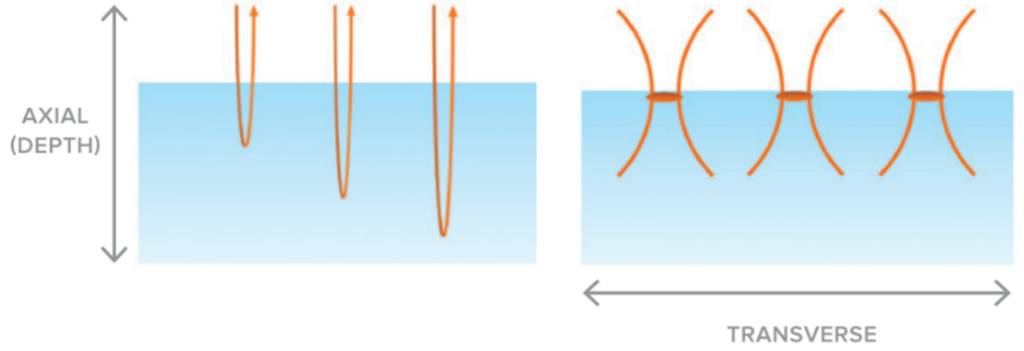
Near infrared optical coherence tomography at ~800 nm is very powerful. It offers better axial resolution than OCT wavelengths above 1 μm (as shown below), and uses cost-effective, high-speed silicon-based cameras for detection.
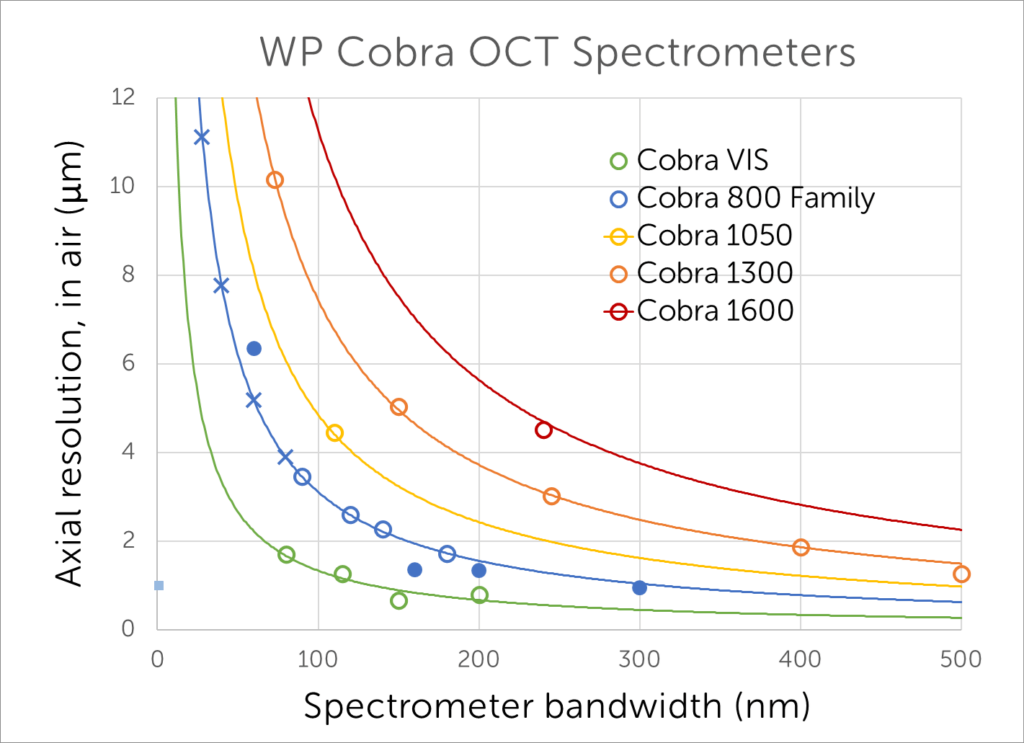
At Wasatch Photonics, we’ve worked with many researchers, instrument developers, and industrial monitoring customers to supply drop-in OCT spectrometers for NIR OCT systems, all with our signature high sensitivity, low roll-off measurements, and software driver kits (SDKs) for accelerated, high-quality image acquisition. During this time, we’ve developed three unique 800 nm OCT spectrometer series – each optimized optomechanically by use case and/or application to serve different imaging system needs:
- Cobra-S: Our original ‘research model’, high resolution & proven imaging performance
- Cobra OEM: Our most compact & lightweight model, balancing depth & resolution
- Cobra-D: A robust, proprietary design offering greater depths than any other 800 nm OCT spectrometer on the market
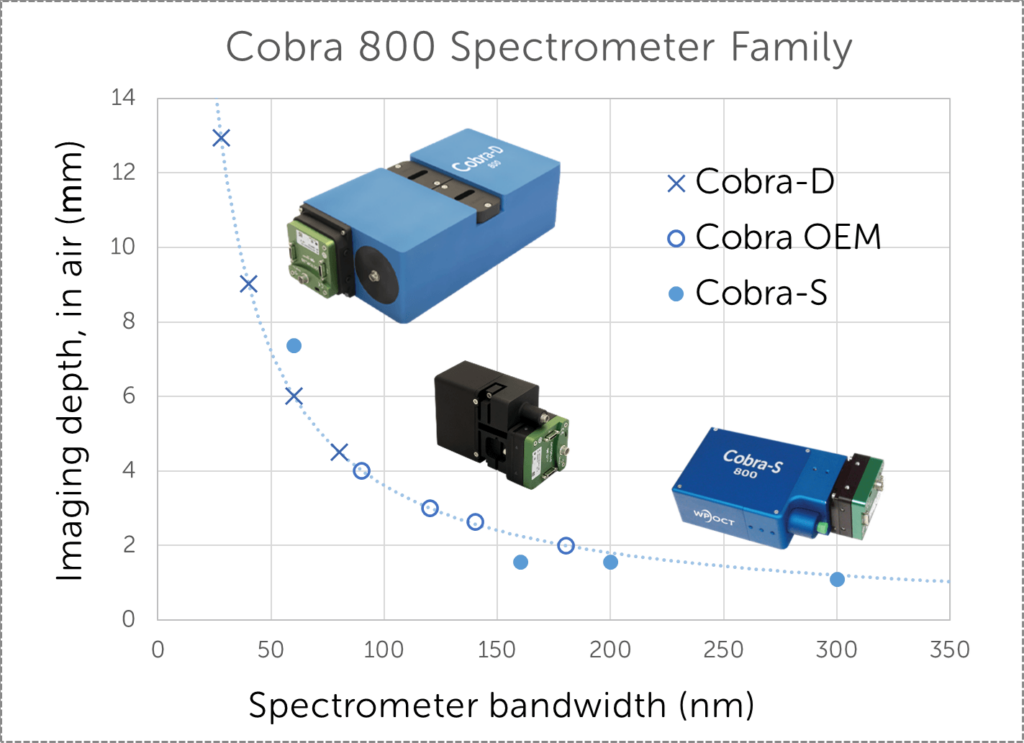
All of these models offer exceptional sensitivity, low roll-off, high signal-to-noise ratio, and subpixel resolution. We achieve this using a series of optimized optical bench designs built around our own industry-leading OCT gratings, which we complement with custom lens sets for diffraction-limited imaging onto high-speed, high-fidelity cameras. This gives us complete control over the optical design, and the ability to customize these models for large-volume system integration.
Each model comes in multiple bandwidth and camera speed options, all using the OctoPlus e2v 2048 pixel imaging camera. Images can be acquired over a USB 3.0 interface up to 130 kHz, or at 250 kHz over Camera Link.
NIR OCT spectrometers: 3 distinct options
Compare the specifications of our NIR OCT spectrometers
| Cobra-S | Cobra OEM | Cobra-D | |
|---|---|---|---|
| Key Benefits | Maximum speed & resolution | Compact, lightweight | Greater depth, industrial grade |
| Max Imaging Depth (in air) | 1-7 mm | 2-4 mm | 4-12 mm |
| Wavelengths of Operation | 650-950 nm | 750-930 nm | 800-880 nm |
| Bandwidth Options | 60-300 nm | 90-180 nm | 28-80 nm |
| Spectral Resolution | 0.03-0.15 nm | 0.05-0.09 nm | 0.015-0.04 nm |
| Dimensions | 9.5 x 19 x 6 cm | 130 x 86 x 60 mm | 27.8 x 13.4 x 7.9 cm |
| Weight | 1.4 kg | 0.7 kg | 5.5 kg |
| Applications | Retinal & anterior chamber imaging, angiography, vibrometry, real-time 3D imaging | OEM integration into imaging systems for materials processing, inspection, ophthalmology | Long-range imaging in ophthalmology, medicine, industrial process monitoring, laser weld monitoring |
Near infrared optical coherence tomography: Buy vs build
Using a prebuilt, off-the-shelf NIR OCT spectrometer as one of the starting components can speed and simplify your system build, reduce risk, and improve the quality of images collected. This allows you to focus on your application with confidence that you are collecting the best images possible. To learn more about the advantages of buying vs building an OCT spectrometer, read our tech note, DIY Optical Coherence Tomography System Basics.
We’ve optimized our gratings, spectrometers, and software/SDKs specifically for OCT, with a focus on ease of integration, customization, and use by researchers and OEMs like you. Our team brings a wealth of experience in OCT applications and systems design, and an intimate understanding of our product performance and possibilities, allowing us to connect product and purpose with elegant, cost-effective solutions.
Whether you have a new application or an existing system, let our expert team help you to find the ideal OCT spectrometer for your application.

